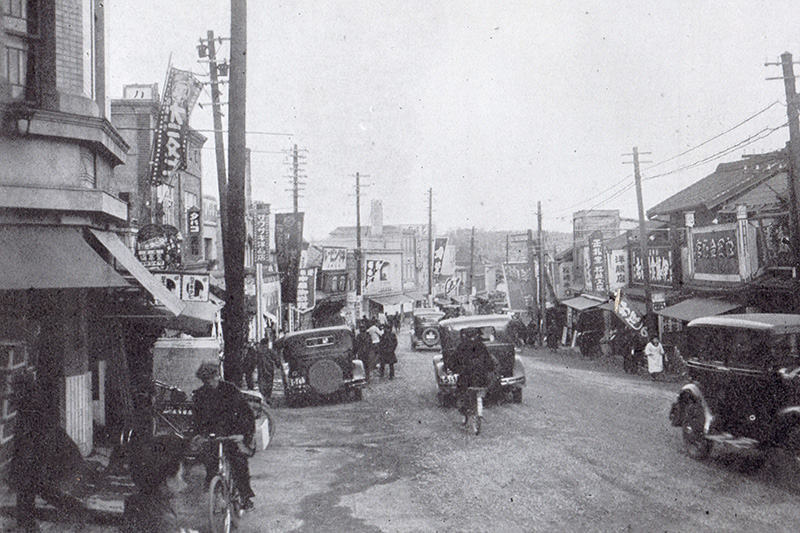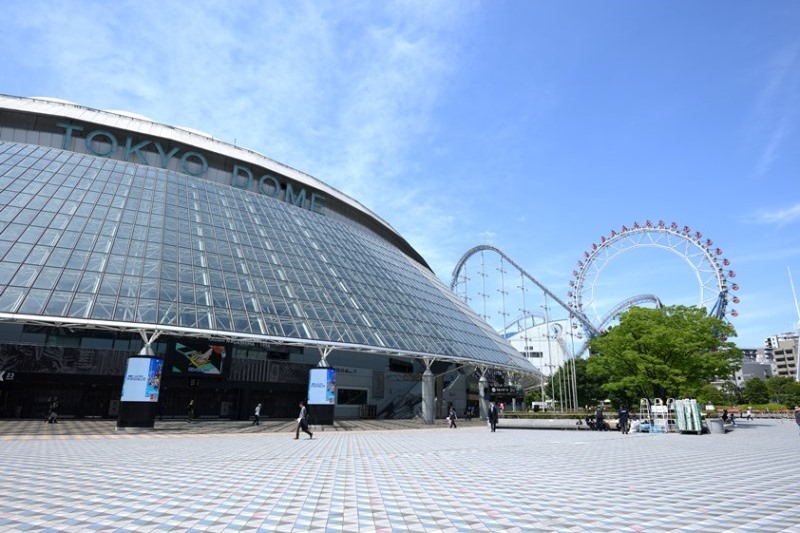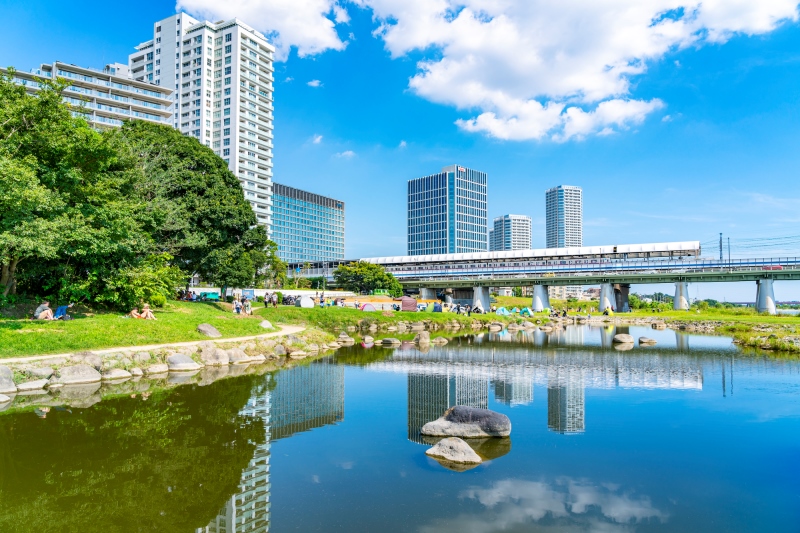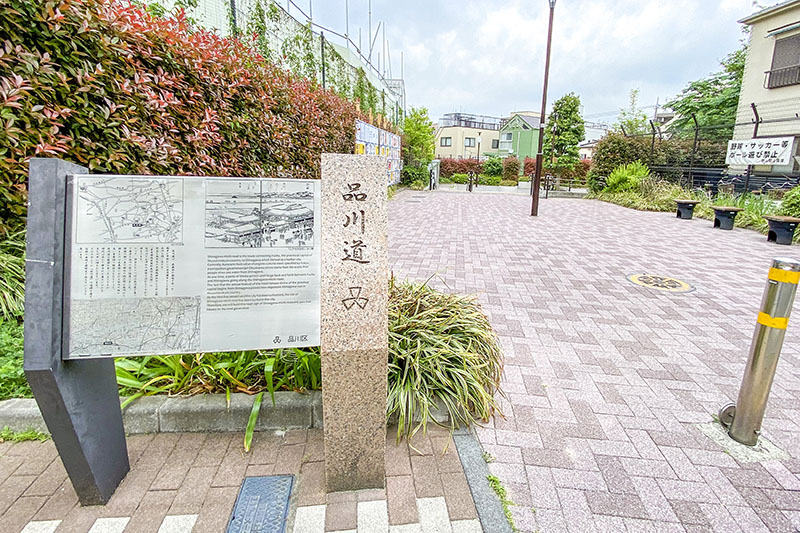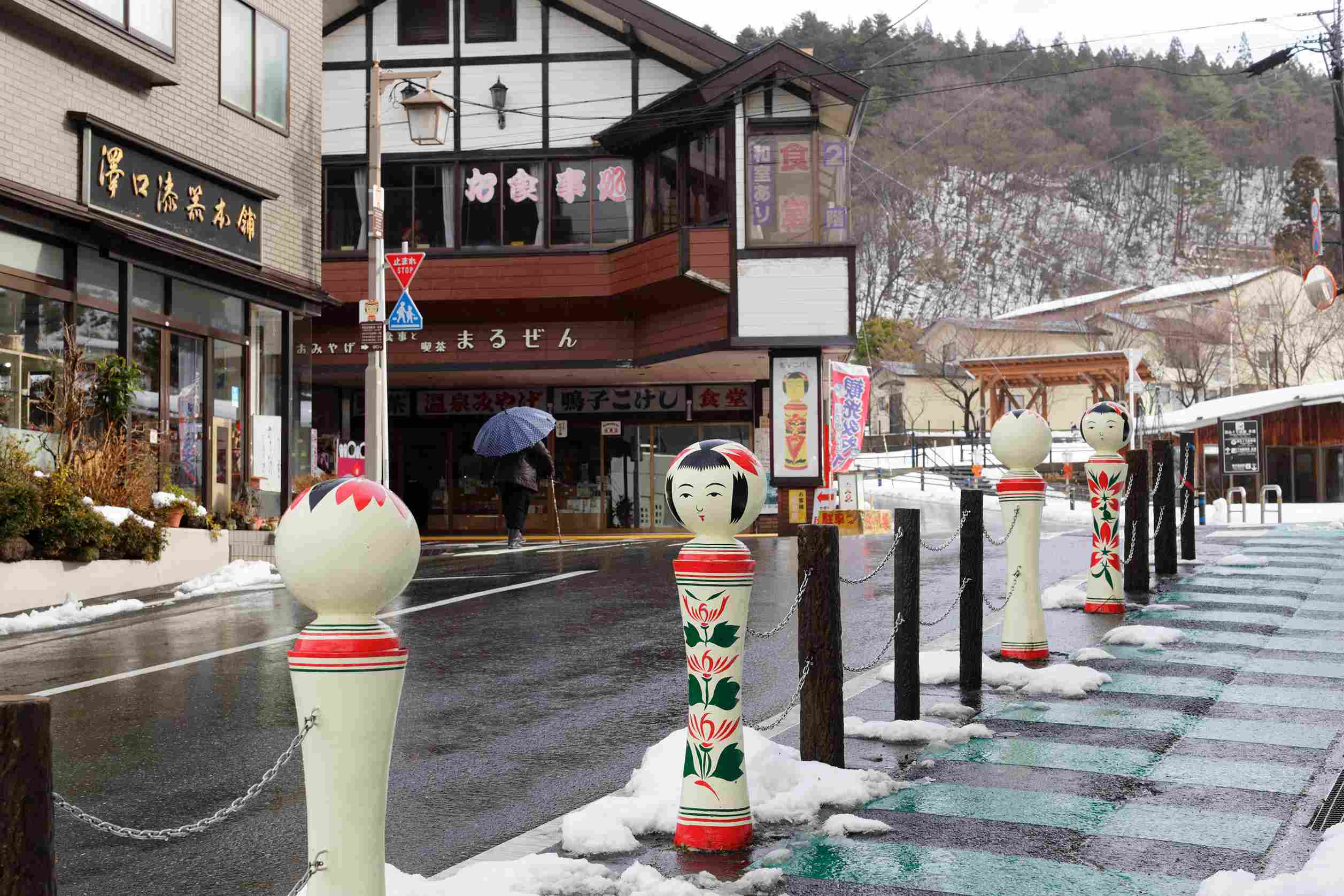Shibuya Ward has a strong impression of being a commercial town and a town for young people, with its "Centre Street", "Harajuku" and "Dogenzaka", but there are also many quiet residential areas in the ward, such as "Shoto", "Daikanyama", "Hiroo" and "Yoyogi Uehara", the area is also rich in greenery such as "Yoyogi Park", "Meiji Shrine" and "Shinjuku Gyoen" (Sendagaya Gate side). In particular, Shinjuku Gyoen and Yoyogi Park are the fifth and sixth largest parks in the 23 wards, while parks 1-4 are located in the suburbs, making them the first and second largest parks closest to Yamanote Line stations.
In recent years, the area around Shibuya Station has been undergoing redevelopment by Tokyu and others, as well as the rebuilding of public facilities, and is also attracting attention as an evolving town.
The present-day Shibuya ward was created in 1932 by incorporating three towns and villages in Toyotama County, namely Shibuya-cho, Sendagaya-cho and Yoyobata-cho, as neighbouring towns and villages were incorporated into the enlarged city of Tokyo. The present-day Shibuya area is introduced here as the 'Shibuya area'.
Entrance to Centre Street
Yoyogi Park
■1 Topography and Shibuya up to modern times
The Shibuya area is located on the eastern part of the 'Musashino Plateau', on the 'Yodobashi Plateau'. The 'Shibuya River' flows through the centre, and the 'Shibuya River' and its tributaries have cut the plateau, resulting in many valleys and an irregular topography. The depth of the valley in Shibuya can be felt from the fact that the Tokyo Metro Ginza Line pops out of the basement of the 'Omotesando Station' as it heads towards the 'Shibuya Station', with the station located three floors above ground (the difference in elevation between Shibuya and Omotesando Stations is approximately 22 metres). Today, many of the rivers in the district, including the 'Shibuya River', are culverted (undergrounded waterways) and the surface has been converted into roads.
The Shibuya area was home to the powerful Shibuya clan in the Middle Ages, and temples and shrines such as 'Konno Hachimangu' and 'Ontake Shrine' were located in the area. In the late Edo period (1603-1868), pilgrimages to Mount Daisen and Mount Fuji became popular among the townspeople of Edo, and the Daisen Road passing through Shibuya was crowded with pilgrims, giving rise to a teahouse district on Miyamasuzaka.
Depicting the time when there was a water mill on the Shibuya River (Katsushika Hokusai, Fugaku Sanjurokkei [Thirty-six views of Mt. Fugaku], water mill in Onden).
Tokyo Metro Ginza Line Shibuya Station
■2 Meji - Taisho period (1868 - 1926)
The Shibuya area gradually began to develop after the Meiji Restoration in 1885, when the 'Shibuya Station' of the 'Japan Railway' was established, and the 'Tamagawa Electric Railway' ('Tamaden') opened in 1907, one of its purposes being to transport gravel from the 'Tama River' to the city centre. The trains were also used by a large number of tourists to the 'Tama River' and military personnel to the 'Komazawa Military Training Camp'. The station became one of Tokyo's leading terminal and transfer stations, with many lines serving the area, including the Tokyo City Tram (later the Toden), the Tokyo Yokohama Electric Railway (now the Tokyu Toyoko Line), the Teito Electric Railway (now the Keio Inokashira Line) and the Tokyo Rapid Transit Railway (now the Tokyo Metro Ginza Line).
In the late Meiji period, many educational institutions such as Aoyama Gakuin University, Jissen Women's School (now Jissen Women's University), Tokyo Agricultural College (now Tokyo University of Agriculture, now relocated) and Kokugakuin University moved into the Shibuya area, which had improved transportation convenience, and the area developed as a centre of culture and education.
In the Taisho period (1912-1926), the Meiji Jingu Shrine, dedicated to the Emperor Meiji, was established in the area, attracting many pilgrims. Even today, Meiji Jingu is the most visited shrine in Japan, with around 3 million people paying homage on New Year's Day. When the 'Meiji Jingu' shrine was built, approximately 100,000 donated trees from all over the country were planted, and today the shrine is a forest rich in nature.
Shibuya station in the Taisho era
Meiji Jingu
■3 Development in the Pre-War Period
As the western suburbs of Tokyo became more residential, the number of passengers increased, especially after the Great Kanto Earthquake of 1923, and many people, including victims of the disaster, moved to the suburbs of Tokyo, and the area around Shibuya Station developed as a commercial area with an increase in transit passengers. The Shibuya area also became increasingly residential, with housing companies developing subdivisions in the area. In 1934, the Toyoko Department Store, the first directly operated terminal department store in the Kanto region, opened.
The urbanisation of Tokyo's suburbs, including the Shibuya area, continued, and in 1932 the city was expanded from 15 to 35 wards. At this time, Shibuya Ward was created as one of the 20 newly established wards.
Dojunkai Aoyama Apartment (pre-Showa period) (courtesy of Makoto Ikuta)
Omotesando Hills
■4 Post-War to the Present
After the end of the war, the area around the station became a bustling black market where food and daily necessities were sold, supporting the lives of the residents along the railway line. In Dogenzaka-shita, there was a shop where love letters to American soldiers were written on their behalf, which later became known as Koibumi Yokocho (Love Letter Alley).
In 1948, the Sanmaru Western Goods Store opened, which is now known as SHIBUYA109.
In 1956, the Tokyu Culture Hall with a planetarium opened, which is now Shibuya Hikarie; in 1961, the Shibuya Centre Shopping Association was formed; and in 1964, the Shibuya National Shopping Centre was established. The Yoyogi National Stadium Gymnasium, Yoyogi Athletes' Village and Shibuya Public Hall were established for the 1964 Tokyo Olympics.
In 1909, the army's Yoyogi Military Training Camp was established on the site of Yoyogi Park. The following year, Yoshitoshi Tokugawa, an army captain and the eighth head of the Shimizu Tokugawa family, made Japan's first successful aeroplane flight. After the war, it was confiscated by the US military and used as the "Washington Heights" dormitory, but when the Tokyo Olympics were held, it was returned for use as the "Yoyogi Athletes' Village", with some of the buildings used as the athletes' village buildings as they were. After the Olympics, the site was developed into a park, and in 1967 the vast Yoyogi Park was created (the entire park opened in 1971). Today, the buildings used as Washington Heights and Yoyogi Athletes' Village are preserved in the park as the Olympic Memorial Lodgings.
Yoyogi Park
Olympic Memorial Lodge
■5 Recent Redevelopment and Future Plans
In recent years, various projects have been completed in the vicinity of 'Shibuya Station', including 'Tokyu', public facilities, railway companies and commercial facilities. Notable examples include the reconstruction of the Shibuya Ward Office and Shibuya Public Hall, which was completed in 2019, and MIYASHITA PARK, which was completed in 2020. These projects are aimed at transforming Shibuya from a town for young people into a town visited by people of all ages through infrastructure development.
Other projects that will create commercial facilities and new spaces include the 'Shibuya Sakura Stage', scheduled for completion in 2023, the 'Shibuya 2-chome District 17', scheduled for completion in 2024, and the 'Shibuya Upper West Project', scheduled for completion in 2027, as well as the Shibuya REGENERATION Project, scheduled for completion in FY2029, will create a pedestrian network and plazas that will expand the circulation from the station to the town, and many other large-scale projects are underway to create new liveliness and fun.
With new spots popping up one after another, Shibuya Ward is attracting more and more attention and evolving into a place where people from all walks of life can visit and enjoy themselves. The area is expected to become even more lively in the future.
On the right is the Shibuya Ward Office and on the left the Shibuya Public Hall
MIYASHITA PARK
■Mini Columns Mini-Columns
The Tokyo Koto originated in the late Edo period (1603-1868) with the Yamada Koto, which was created by Yamada Toyoichi in Edo, who improved on the Ikuta Koto of Kyoto. Later, Shigemoto Fusakichi improved the length and thickness of the zither, which became characterised by its beautiful tone and lingering sound, and came to be known as the 'Tokyo zither'. The 'Tokyo Koto' was designated as one of the 'Tokyo Metropolitan Traditional Crafts' in 1991. In Shibuya Ward, the tradition is carried on by the Mitamura Gakki Shop, which was established in 1895.
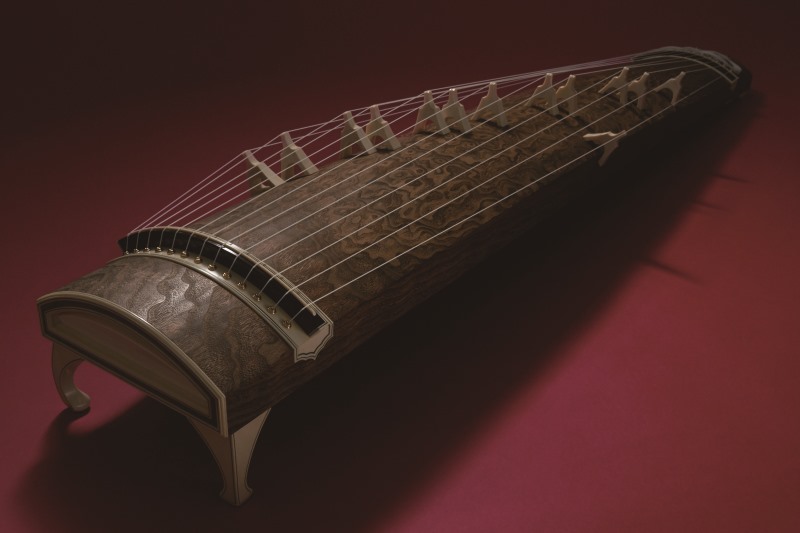
Tokyo Koto


